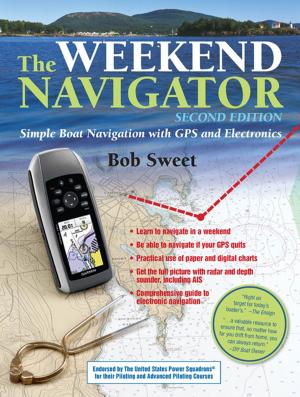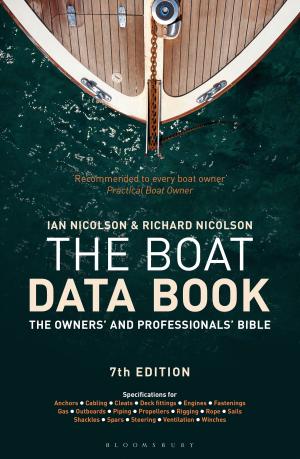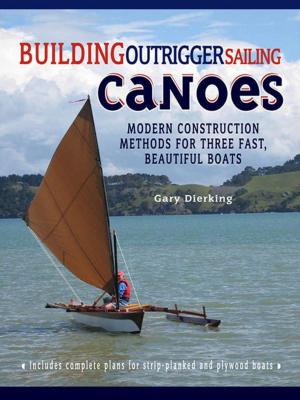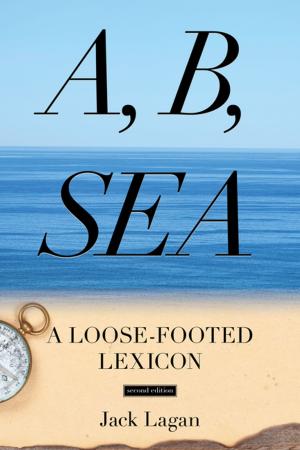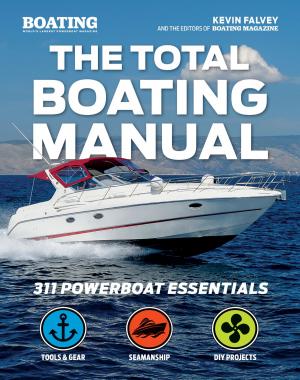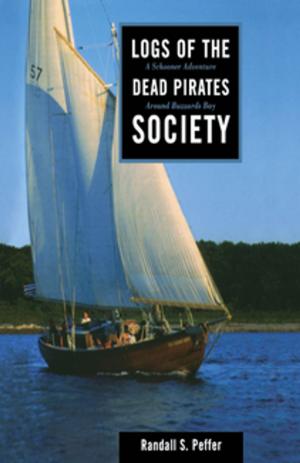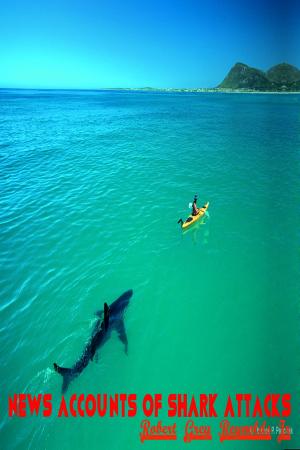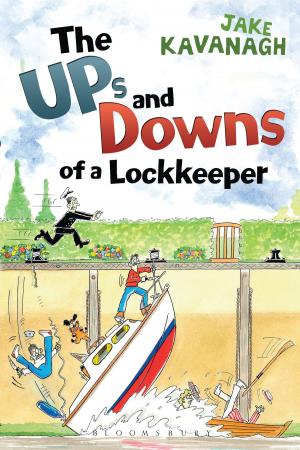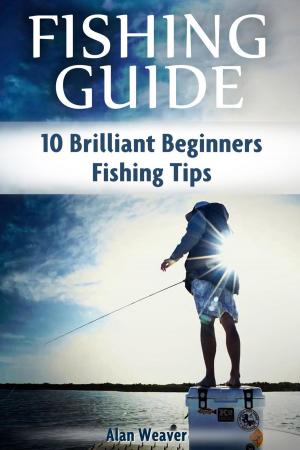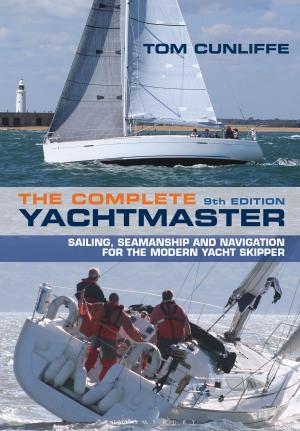| Author: | Alan Phillips | ISBN: | 9781476079776 |
| Publisher: | Alan Phillips | Publication: | October 12, 2010 |
| Imprint: | Smashwords Edition | Language: | English |
| Author: | Alan Phillips |
| ISBN: | 9781476079776 |
| Publisher: | Alan Phillips |
| Publication: | October 12, 2010 |
| Imprint: | Smashwords Edition |
| Language: | English |
This eBook is illustrated and interactive, with hyperlinks to the relevant internet sites.
This is THE reference for seafarers who need to understand hurricanes, cyclones and typhoons.
Locating the center of a tropical cyclone;
If intelligent action is to be taken to avoid the full fury of a tropical cyclone, early determination of its location and direction of travel relative to the vessel is essential. The bulletins and forecasts are an excellent general guide, but they are not infallible and may be sufficiently in error to induce a mariner in a critical position to alter course so as to unwittingly increase the danger of the vessel. Often it is possible, using only those observations made aboard ship, to obtain a sufficiently close approximation to enable the vessel to manoeuvre to the best advantage.
As previously stated, the presence of an exceptionally long swell is usually the first visible indication of the existence of a tropical cyclone. In deep water it approaches from the general direction of origin.
Maneuvering to Avoid the Storm Center;
The safest procedure with respect to tropical cyclones is to avoid them. If action is taken sufficiently early, this is simply a matter of setting a course that will take the vessel well to one side of the probable track of the storm, and then continuing to plot the positions of the storm centre as given in the weather bulletins, revising the course as needed.
However, this is not always possible. If the ship is found to be within the storm area, the proper action to take depends in part upon its position relative to the storm centre and its direction of travel. It is customary to divide the circular area of the storm into two parts.
In the Northern Hemisphere, that part to the right of the storm track (facing in the direction toward which the storm is moving) is called the dangerous semicircle. It is considered dangerous because (1) the actual wind speed is greater than that due to the pressure gradient alone, since it is augmented by the forward motion of the storm, and (2) the direction of the wind and sea is such as to carry a vessel into the path of the storm (in the forward part of the semicircle)……
….In a sailing vessel attempting to avoid a storm centre, one should steer courses…….. However, if it becomes necessary for such a vessel to heave to, the wind is of greater concern than the sea. A good general rule always is to heave to on whichever tack permits the shifting wind to draw aft. In the Northern Hemisphere, this is the starboard tack in the dangerous semicircle, and…….
Sailing Directions
Avoid and Survive Hurricanes
NORTHERN HEMISPHERE
SOUTHERN HEMISPHERE
GENERAL
Tropical Cyclones
Locating and tracking tropical cyclones
Signs of approach
Locating the center of a tropical cyclone
Practical rules
Right or dangerous semicircle
On storm track, ahead of center
On storm track, behind center
Coastal effects
Wave Heights from Significant Wave Heights (SWH)
Extratropical Cyclones
Cold Fronts
TROPICAL STORMS
DESCRIPTION AND CAUSES
Introduction
Definitions
Areas of Occurrence
Origin, Season and Frequency
North Atlantic:
Eastern North Pacific:
Western North Pacific
North Indian Ocean
South Indian Ocean
Southwest Pacific and Australian Area
ANATOMY OF TROPICAL CYCLONES
Formation
Portrait of a Hurricane
Life of a Tropical Cyclone
FORECASTING AND PREDICTING TROPICAL CYCLONES
AVOIDING TROPICAL CYCLONES
Approach and Passage of a Tropical Cyclone
Locating the Center of a Tropical Cyclone
Statistical Analysis of Barometric Pressure
Maneuvering to Avoid the Storm Center
Northern Hemisphere
Southern Hemisphere
CONSEQUENCES OF TROPICAL CYCLONES
High Winds and Flooding
This eBook is illustrated and interactive, with hyperlinks to the relevant internet sites.
This is THE reference for seafarers who need to understand hurricanes, cyclones and typhoons.
Locating the center of a tropical cyclone;
If intelligent action is to be taken to avoid the full fury of a tropical cyclone, early determination of its location and direction of travel relative to the vessel is essential. The bulletins and forecasts are an excellent general guide, but they are not infallible and may be sufficiently in error to induce a mariner in a critical position to alter course so as to unwittingly increase the danger of the vessel. Often it is possible, using only those observations made aboard ship, to obtain a sufficiently close approximation to enable the vessel to manoeuvre to the best advantage.
As previously stated, the presence of an exceptionally long swell is usually the first visible indication of the existence of a tropical cyclone. In deep water it approaches from the general direction of origin.
Maneuvering to Avoid the Storm Center;
The safest procedure with respect to tropical cyclones is to avoid them. If action is taken sufficiently early, this is simply a matter of setting a course that will take the vessel well to one side of the probable track of the storm, and then continuing to plot the positions of the storm centre as given in the weather bulletins, revising the course as needed.
However, this is not always possible. If the ship is found to be within the storm area, the proper action to take depends in part upon its position relative to the storm centre and its direction of travel. It is customary to divide the circular area of the storm into two parts.
In the Northern Hemisphere, that part to the right of the storm track (facing in the direction toward which the storm is moving) is called the dangerous semicircle. It is considered dangerous because (1) the actual wind speed is greater than that due to the pressure gradient alone, since it is augmented by the forward motion of the storm, and (2) the direction of the wind and sea is such as to carry a vessel into the path of the storm (in the forward part of the semicircle)……
….In a sailing vessel attempting to avoid a storm centre, one should steer courses…….. However, if it becomes necessary for such a vessel to heave to, the wind is of greater concern than the sea. A good general rule always is to heave to on whichever tack permits the shifting wind to draw aft. In the Northern Hemisphere, this is the starboard tack in the dangerous semicircle, and…….
Sailing Directions
Avoid and Survive Hurricanes
NORTHERN HEMISPHERE
SOUTHERN HEMISPHERE
GENERAL
Tropical Cyclones
Locating and tracking tropical cyclones
Signs of approach
Locating the center of a tropical cyclone
Practical rules
Right or dangerous semicircle
On storm track, ahead of center
On storm track, behind center
Coastal effects
Wave Heights from Significant Wave Heights (SWH)
Extratropical Cyclones
Cold Fronts
TROPICAL STORMS
DESCRIPTION AND CAUSES
Introduction
Definitions
Areas of Occurrence
Origin, Season and Frequency
North Atlantic:
Eastern North Pacific:
Western North Pacific
North Indian Ocean
South Indian Ocean
Southwest Pacific and Australian Area
ANATOMY OF TROPICAL CYCLONES
Formation
Portrait of a Hurricane
Life of a Tropical Cyclone
FORECASTING AND PREDICTING TROPICAL CYCLONES
AVOIDING TROPICAL CYCLONES
Approach and Passage of a Tropical Cyclone
Locating the Center of a Tropical Cyclone
Statistical Analysis of Barometric Pressure
Maneuvering to Avoid the Storm Center
Northern Hemisphere
Southern Hemisphere
CONSEQUENCES OF TROPICAL CYCLONES
High Winds and Flooding

